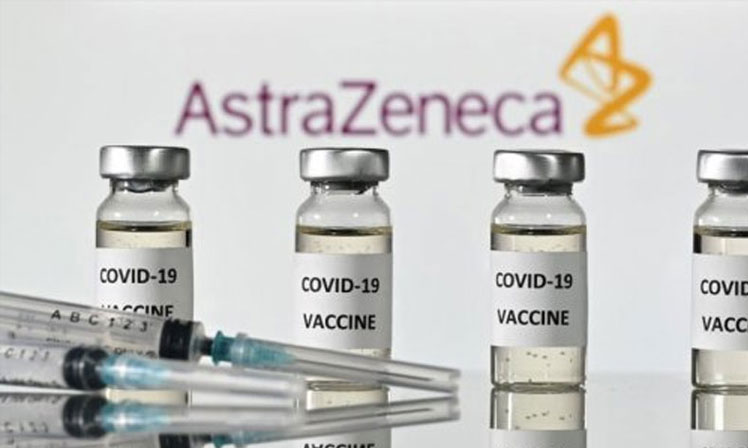
Image Source: Internet Photo
Agencies
Five reasons the Oxford-AstraZeneca vaccine is better news than the Pfizer, Moderna shots
25-November-2020
The 70% overall efficacy readout notwithstanding, the Covid-19 vaccine AZD1222 developed by Swedish-British pharma major AstraZeneca and the University of Oxford could come as better news than that of the vaccines developed by Pfizer-BioNTech and Moderna, despite both of them having earlier reported much higher protection of up to 95 per cent.
Here are five reasons why the AZD1222 preliminary results hold more promise, both in medical terms and for markets such as India.
The half dose boost
The analysis issued by Oxford-AZ on Monday showed a striking difference in efficacy, depending on the amount of vaccine delivered to a participant � a regimen comprising two full doses given a month apart looked to be just 62 per cent effective while, intriguingly, participants who received a lower amount of the vaccine in a first dose and then the full amount in the second dose were found to be 90 per cent less likely to develop Covid, compared with participants in the placebo group.
While the reasons for this are still being examined, the half dose giving higher protection is really good news � as the manufacturers will have more doses available to vaccinate people, thereby making it possible to cover more of the population, especially in the initial months when supply will be constrained.
A possible explanation for the half dose doing better is that this regimen probably mimics the body�s natural response to an infection: a fightback against an infection being led by the first set of antibodies � phagocytes, interferons and cytokines � before a more tailored attack is mounted by the specialised neutralising antibodies � the B-cells and the T-cells.
Also, the overall results of 70.4 per cent efficacy for the Oxford-AZ vaccine is still higher than most flu jabs, which offer protection of 40-60 per cent.
coronavirus vaccine, oxford coronavirus vaccine, moderna coronavirus vaccine, pfizer coronavirus vaccine, covid vaccine, indian express Coronavirus vaccine: Pfizer has reported that its vaccine, BNT162b2, has been more than 90 per cent effective in late-stage trials. (Reuters Photo: Dado Ruvic)
Efficacy across age groups; effect on asymptomatic cases
The Oxford-AZ vaccine, from the preliminary results, shows that it works across all age groups � including the elderly. Plus, there�s a really interesting hint in the preliminary data that the regimen is also able to reduce asymptomatic infection. Both these aspects are being seen as big advantages over the initial trial results put out by the Pfizer-BioNTech combine and Moderna.
Crucially, if the Oxford-AZ vaccine is better at tackling symptomatic spread, it might allow countries to get to a point where authorities can stop the virus in its tracks, and it can�t transmit from person to person. There�s going to be a lot more data to come and over the next month or so on these aspects.
Also, there were no severe cases or hospitalisation in the 23,000 people who got the shot.
All of these mark a significant improvement over the other two vaccine trial results issued in the previous weeks.
A lot easier to store and distribute
Unlike the Moderna and Pfizer-BioNTech vaccines, which must be stored/transported at negative 20-80 degrees Celsius, the Oxford-AZ candidate can be stored up closer to normal fridge temperatures, which means it can be distributed and administered cheaper and faster to people.
The vaccine can be transported under normal refrigerated temperatures of 2 to 8 degrees Celsius, AZ said Monday. By comparison, Pfizer has to distribute its vaccine using specially designed �thermal shippers� that use dry ice to maintain temperatures of minus-80 degrees Celsius.
For the Oxford-AZ vaccine, the normal supply chain for vaccines that are currently in use across countries such as India, can be used for supplying this vaccine, especially to the rural areas where cold chain logistics are weak.
coronavirus vaccine, oxford coronavirus vaccine, moderna coronavirus vaccine, pfizer coronavirus vaccine, covid vaccine, indian express Coronavirus vaccine: On November 16, 2020, US biotech company Moderna announced a vaccine against COVID-19 that is 94.5% effective. (File Photo)
It will also be much cheaper
The Oxford-AstraZeneca vaccine is markedly cheaper. AZ, which has pledged it won�t make a profit on the vaccine during the pandemic, has reached agreements with governments and international health organisations such as Gavi that pegs its cost at about $2.50 a dose.
In contrast, Pfizer�s vaccine costs about $20 a dose, while Moderna�s is upwards of $25. There is a theoretical possibility that the Oxford-AZ vaccine could get even cheaper, given the finding that a smaller initial dose is more effective than a larger one.
Serum Institute of India�s Covishield, which the Pune-based company has been producing �at risk�, is a variant of AZD1222 and is currently undergoing late-stage human trials in India on 1,600 participants. As things stack up, this could be among the first vaccines that could be used to inoculate Indians once the bridging study being conducted here is cleared by the Indian drug regulator.
Plus, the results of the Oxford-AZ vaccine could be extremely positive news for Russia�s Sputnik V vaccine, which uses a technology similar to AZD1222 � the non-replicating viral vector method. The Russian vaccine is also under trials in India, with the involvement of Hyderabad-based Dr Reddy�s Labs.
India doesn�t really have any firm tie-ups for either the Pfizer-BioNTech or Moderna vaccines � both of which use the novel mRNA technology � at present.
Leave a comment: (Your email will not be published)